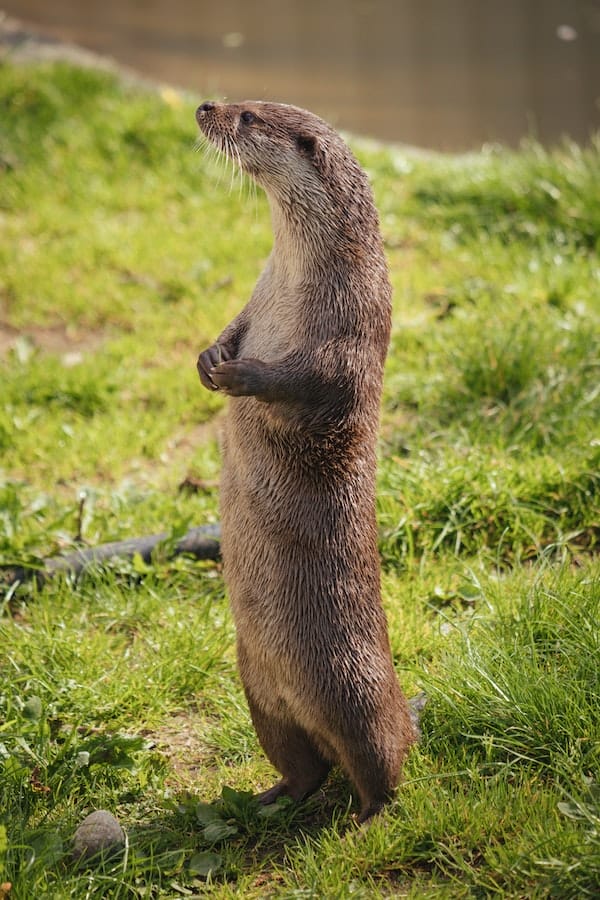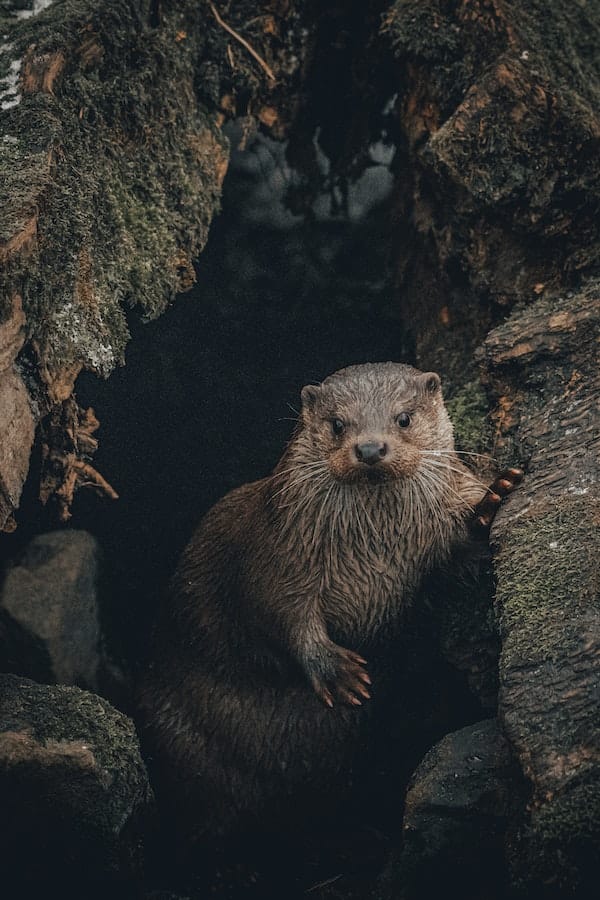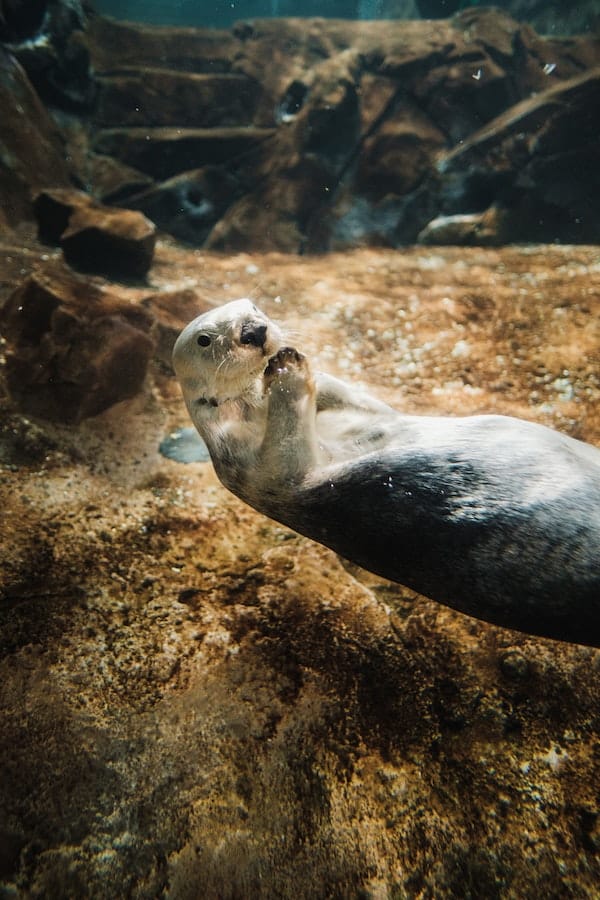
Otters are truly fascinating creatures. These playful mammals are found in both marine and freshwater habitats throughout the world, and they have adapted to a wide range of environments.
From their unique fur coats that keep them warm to their uncanny ability to catch prey, there is so much to learn about otters – including some amazing facts!
Read on to discover some of the most interesting otter facts out there. You won’t be disappointed!
Fact #1: Otters are carnivorous mammals that belong to the weasel family.
Otters are carnivorous animals, meaning they eat mostly meat.
They are part of the Mustelidae family, which includes other semi-aquatic mammals like badgers, ferrets, and wolverines.
This group of animals is known for their slim bodies and short legs that enable them to maneuver in tight spaces – perfect for an animal that spends most of its time in the water!
Fact #2: There are 13 species of otters around the world, including the giant otter, which is the largest member of the weasel family.
There are 13 different species of otters around the world, ranging from the small-clawed otter that grows up to 4 feet long to the giant otter which can grow up to 6.5 feet in length and weigh up to 99 pounds!
The giant otter is also the largest member of its family, making it an apex predator in its freshwater habitats.
This species is found primarily in the Amazon rainforest and its diet consists of fish, crabs, shellfish and other aquatic creatures.
Fact #3: Otters are found on every continent except Antarctica.
Otters are an incredibly widespread species and can be found on every continent except Antarctica.
They live in a variety of habitats, from tropical rainforests to cold arctic waters, and their populations thrive near rivers, lakes and coasts.
There are even some species that inhabit underground burrows!
Fact #4: The smallest otter is the Asian small-clawed otter, which weighs just 5 pounds.

The Asian small-clawed otter is the smallest species of otter in the world and can weigh as little as 5 pounds.
These amazing animals are found throughout Asia, from India to Southeast Asia, and they inhabit wetlands, swamps, marshes and other bodies of water.
They have a unique diet that consists mostly of crabs, frogs, and other small aquatic creatures.
Fact #5: The largest otter is the giant otter, weighing up to 140 pounds.
The giant otter is the largest species of otter in the world and can weigh up to 140 pounds.
They inhabit freshwater habitats in South America and are known for their playful behavior and gregarious nature.
Giant otters have an incredibly diverse diet that consists mostly of fish but also includes crabs, turtles, snakes, birds and even small mammals.
Fact #6: Otters have long, slim bodies with short legs and webbed feet, which help them swim quickly through the water.
Otters have long, slim bodies and short legs that enable them to maneuver through the water easily. They also have webbed feet that help propel them forward with each stroke.
These animals are excellent swimmers and can reach speeds of up to 10 mph!
Fact #7: Otters have thick fur that keeps them warm in cold water and helps to camouflage them from predators.
Otters have thick fur coats that help keep them warm in cold water temperatures and also provide camouflage from predators.
Their fur is usually brown or grey, but they can also be found with white or black markings. Some species of otter even have two different colored coats!
- Related post: Otter Names and the Cutest Names for Otters
- Related post: Everything You Need to Know About Owning a Pet Otter
Fact #8: Otters typically live in rivers, lakes, and coastal areas and are good swimmers.
Otters typically inhabit rivers, lakes, and coastal areas and are excellent swimmers.
They use their webbed feet to propel them through the water at speeds of up to 10 mph!
Otters are also incredibly agile animals that can easily maneuver around obstacles in their watery habitats.
Fact #9: Otters are very playful animals.

Otters are incredibly playful animals and can often be seen playing in the water or sliding down mud banks.
They often engage in various activities such as chasing one another, wrestling, and even “surfing” on their backs!
Otters also like to explore their environment by digging and splashing around in the water.
Fact #10: Otters use their whiskers to help them find prey in murky water.
Otters use their long, sensitive whiskers to help them detect prey in murky or cloudy water.
These sensitive hairs also enable the otter to sense vibrations and movement around it, giving it an extra edge when hunting for food.
Fact #11: Otters typically eat fish, crabs, shellfish, and other small aquatic animals.
Otters have a diverse diet consisting mostly of fish, crabs, shellfish, and other small aquatic animals.
They also eat frogs, birds, snakes and even some small mammals such as mice or voles. Otters hunt both day and night and usually swallow their prey whole.
Fact #12: Otters are social animals and are often seen in groups.
Otters are social animals and usually live in small family groups known as “rafts.”
These rafts can comprise up to 12 individuals, with the dominant male leading the group.
Otters are also very gregarious creatures and they enjoy playing together and grooming one another.
Fact #13: Otters can eat up to 15% of their body weight daily.

Otters are voracious eaters and can consume up to 15% of their body weight in a single day!
To meet this high energy demand, otters must frequently hunt throughout the day.
They also spend several hours grooming themselves, as their thick fur needs regular maintenance to keep it waterproof.
Fact #14: Otters typically live for 10-15 years in the wild and up to 20 years in captivity.
Otters typically live for 10-15 years in the wild and up to 20 years in captivity. This is due, in part, to their ability to adapt quickly and easily to different environments.
They also have a high reproductive rate, with females able to produce up to three liters of cubs every two years.
Overall, otters are incredibly fascinating creatures that have adapted to survive in a variety of habitats!
They possess remarkable physical and behavioral traits, such as thick fur, webbed feet, and social behavior.
All these factors contributed to the success of otter populations worldwide.


GIPHY App Key not set. Please check settings